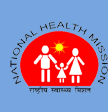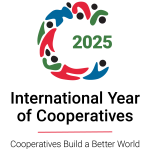Brief Introduction
The VHND is to be organized once every month at the AWC in the village. The AWC is identified as the hub for service provision in the RCH-II, NHM, and also as a platform for inter-sectoral convergence. VHND is also to be seen as a platform for interfacing between the community and the health system.
On the appointed day, AWWs, and other will mobilize the villagers, especially women and children to assemble at the nearest AWC. The ANM and other health personnel should be present on time; otherwise the villagers will be reluctant to attend the following monthly VHND. On the VHND, the villagers can interact freely with the health personnel and obtain basic services and information. They can also learn about the preventive and promotive aspects of health care, which will encourage them to seek health care at proper facilities. Since the VHND will be held at a site very close to their habitation, the villagers will not have to spend money or time on travel. Health services will be provided at their doorstep. The VHSNC comprising the AWW, the ANM, and the PRI representatives, if fully involved in organizing the event, can bring about dramatic changes in the way that people perceive health and health care practices.
Service Package for VHND
Maternal Health
- Early registration of pregnancies.
- Focused ANC.
- Referral for women with signs of complications during pregnancy and those needing emergency care.
- Referral for safe abortion to approved MTP centres.
- Counseling on:
- Education of girls.
- Age at marriage.
- Care during pregnancy.
- Danger signs during pregnancy.
- Birth preparedness.
- Importance of nutrition.
- Institutional delivery.
- Identification of referral transport.
- Availability of funds under the JSY for referral transport.
- Post-natal care.
- Breastfeeding and complementary feeding.
- Care of a newborn.
- Contraception.
- Organizing group discussions on maternal deaths, if any, that have occurred during the previous month in order to identify and analyse the possible causes.
Child Health
- Infants up to 1 year :
– Registration of new births.
– Counselling for care of newborns and feeding.
– Complete routine immunization.
– Immunization for dropout children.
– First dose of Vitamin A along with measles vaccine.
– Weighing. - Children aged 1-3 years :
– Booster dose of DPT/OPV
– Second to fifth dose of Vitamin A
– Table IFA – (small) to children with clinical anaemia.
– Weighing
– Provision of supplementary food for grades of mild malnutrition and referral for cases of severe malnutrition. - All children below 5 years :
– Tracking and vaccination of missed children by ANM / AWW.
– Case management of those suffering from diarrhea and Acute Respiratory infections.
– Counseling to all mothers on home management and where to go in even of complications.
– Organizing ORS depots at the session site.
– Counseling on nutrition supplementation and balanced diet.
– Counseling on and management of worm infestations.
Family Planning
- Information on use of contraceptives.
- Distribution – provision of contraceptive counseling and provision of non-clinic contraceptives such as condoms and OCPs.
- Information on compensation for loss of wages resulting from sterilization and insurance scheme for family planning.
Reproductive Tract Infections and Sexually Transmitted Infection
- Counseling on prevention of RTIs and STIs, including HIV/AIDS, and referral of cases for diagnosis and treatment.
- Counseling for perimenopausal and post-menopausal problems
- Communication on causation, transmission, and prevention of HIV/AIDS and distribution of condoms for dual protection
- Referral for VCTC and PPTCT services to the appropriate institutions.
Sanitation
- Identification of households for the construction of sanitary latrines
- Guidance on where to go and who to approach for availing of subsidy for those eligible to get the same under the Total Sanitation Campaign.
- Avoidance of breeding sites for mosquitoes.
- Mobilization of community action for safe disposal of household refuse and garbage.
Communicable Diseases
- Group communication activities for raising awareness about signs and symptoms of leprosy, suspected cases, and referrals.
- Group communication activities for elimination of breeding sites for mosquitoes, management of fever cases, i.e. importance of collection of blood film for MP and presumptive treatment.
- Awareness generation about symptoms of TB (Coughing for more than three weeks), importance of continued treatment, referral of symptomatic for sputum examination at the nearest health centre.
- Provision of anti-TB drugs to patients.
- Reporting of unusual numbers of cases of any disease or disease outbreak in village.
Gender
- Communication activities for prevention of pre-natal sex selection, illegality of pre-natal sex selection, and special alert for one daughter families.
- Communication on the Prevention of Violence against Women, Domestic Violence Act, 2006.
- Age at marriage, especially the importance of raising the age at marriage for girls.
AYUSH
- Home remedies for common ailments based on certain common herbs and medicinal plants like tulsi, neem, etc. found in the locality.
- Information related to other AYUSH components, including drugs for treating conditions like anaemia.
Health Promotion
Chronic diseases can be prevented by providing information and counseling on:
- Tobacco chewing
- Healthy lifestyle
- Proper diet
- Proper exercise
Nutrition
Diseases due to nutritional deficiencies can be prevented by giving information and counseling on:
- Healthy food habits.
- Hygienic and correct cooking practices.
- Checking for anaemia, especially in adolescent girls and pregnant women; checking, advising, and referring.
- Weighing of infants and children.
- Importance of iron supplements, vitamins, and micronutrients
- Food that can be grown locally.
- Focus on adolescent pregnant women and infants aged 6 months to 2 years.


